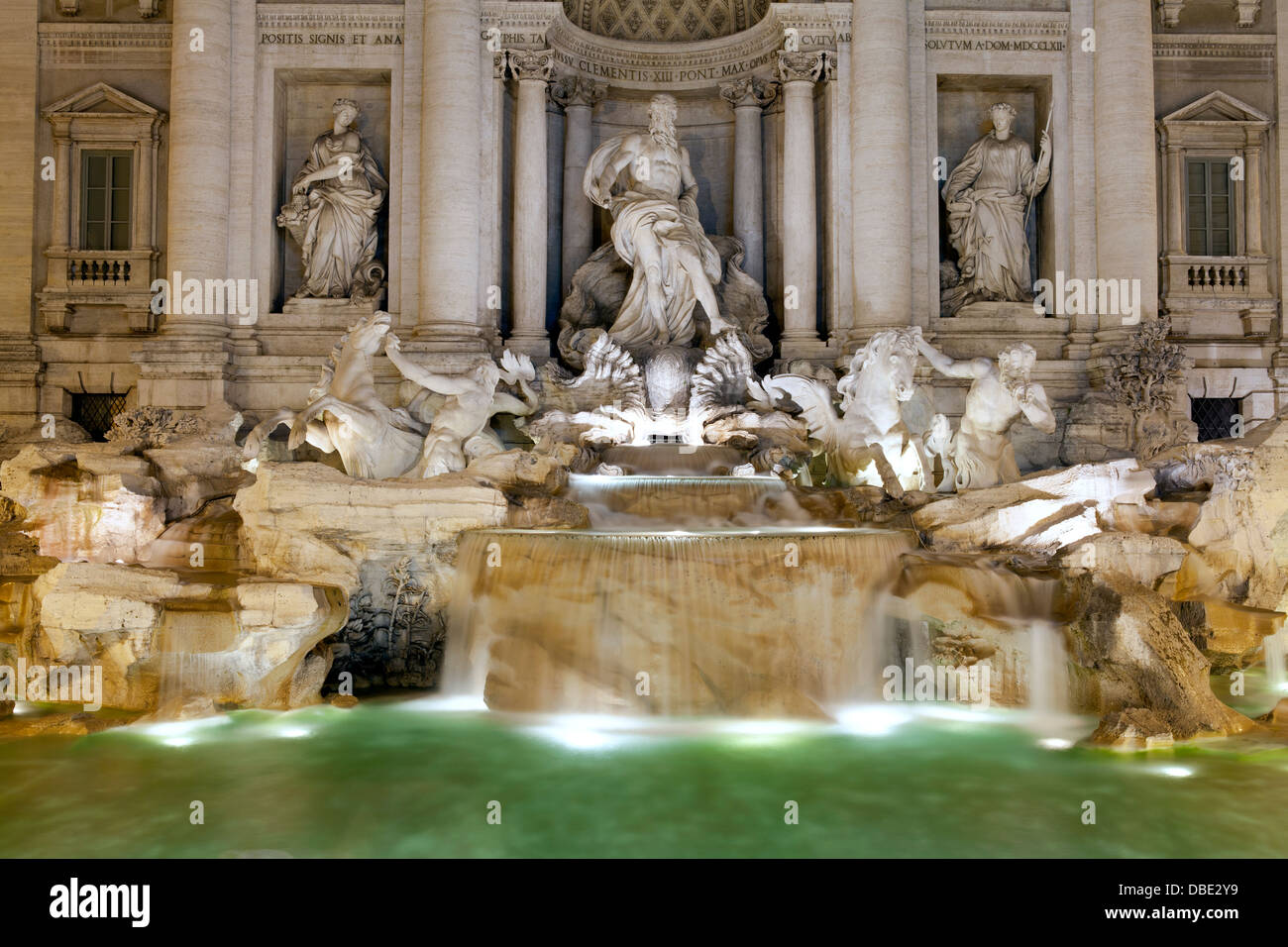Night view of the Trevi Fountain, eighteenth-century Baroque fountain. Rome

Image details
Contributor:
Nacho Calonge / Alamy Stock PhotoImage ID:
DBE2Y9File size:
60.2 MB (2.8 MB Compressed download)Releases:
Model - no | Property - noDo I need a release?Dimensions:
5616 x 3744 px | 47.5 x 31.7 cm | 18.7 x 12.5 inches | 300dpiDate taken:
23 June 2012Location:
Piazza di Trevi, Rome, ItalyMore information:
The Trevi Fountain is the largest (about 40 meters wide), most ambitious and most famous Baroque monumental fountains in Rome (Italy). In 1629 Pope Urban VIII thought the previous fountain was little monumental He asked to Bernini to made a project for possible renewals. The project was abandoned when the pope died. Bernini's lasting contribution was to change the position of the fountain on the other side of the square so that it was facing the Quirinal Palace (so the Pope could also see it and enjoy). Though Bernini's project was scrapped in favor of Nicola Salvi, many touches in the fountain as it was built. The contests were popular during the Baroque to redesign buildings, fountains and even Spain Square. In 1730, Pope Clement XII organized a contest for the fountain in which Nicola Salvi lost, despite which he was commissioned. Work began in 1732 and ended in 1762, long after Clement's death, when the sculpture of Neptune, by the sculptor Pietro Bracci, was located in the central niche. The statues of Abundance and Health, in the two side niches were carved by Filippo della Valle. The Trevi Fountain was finished in 1762 by Giuseppe Pannini, who substituted the present allegories for smooth flat sculptures of Agrippa and Trivia, the Roman goddess.